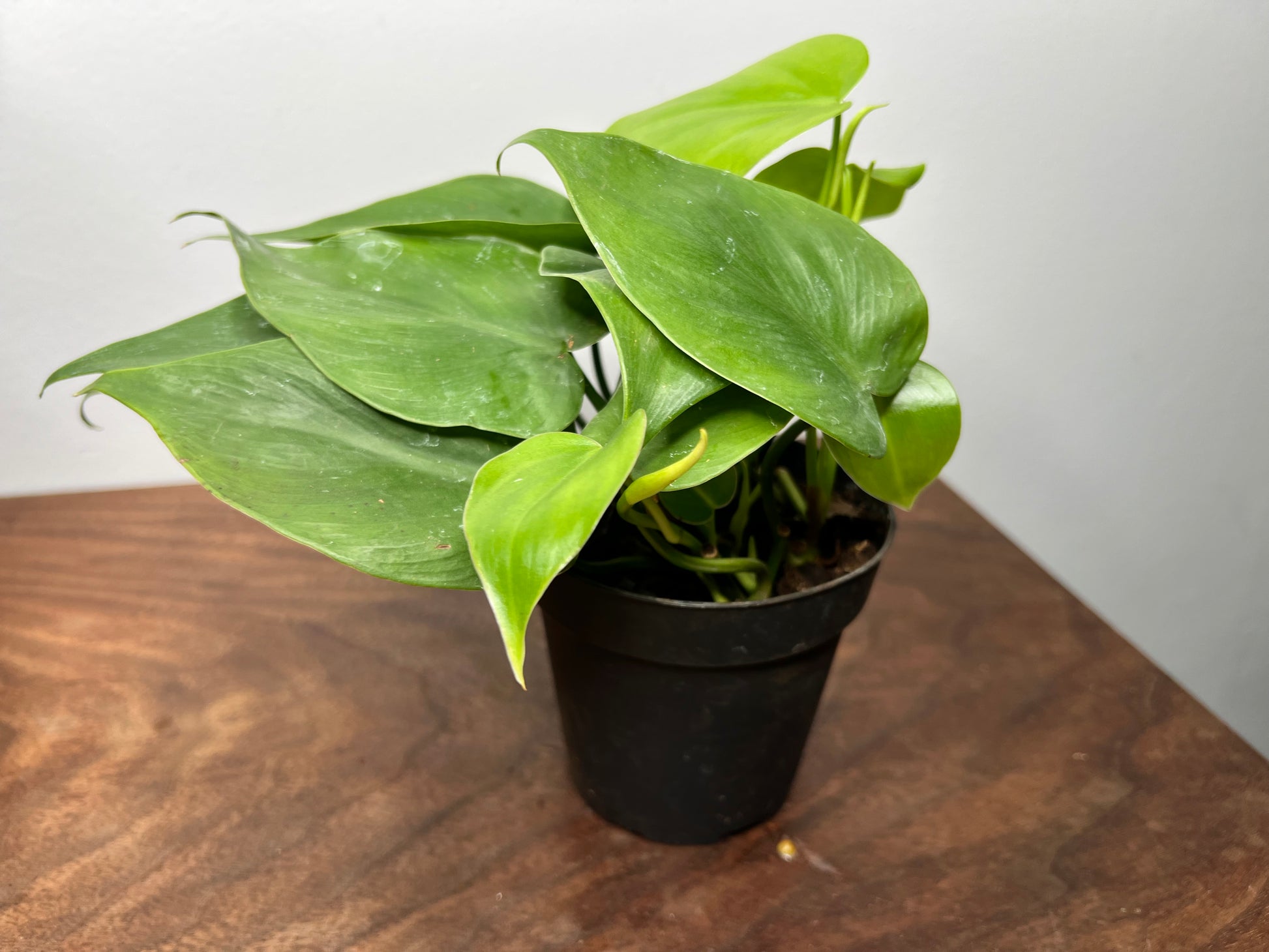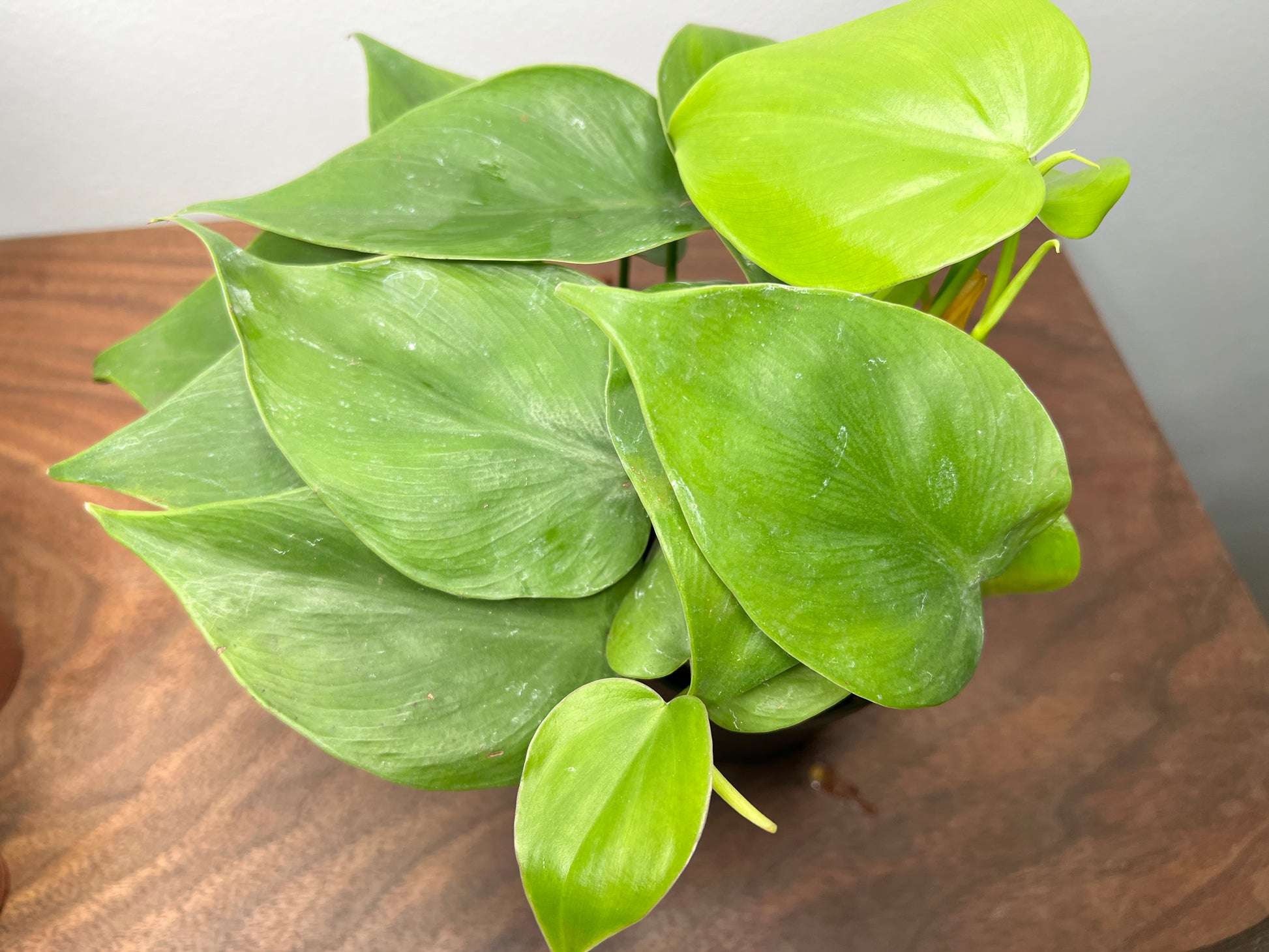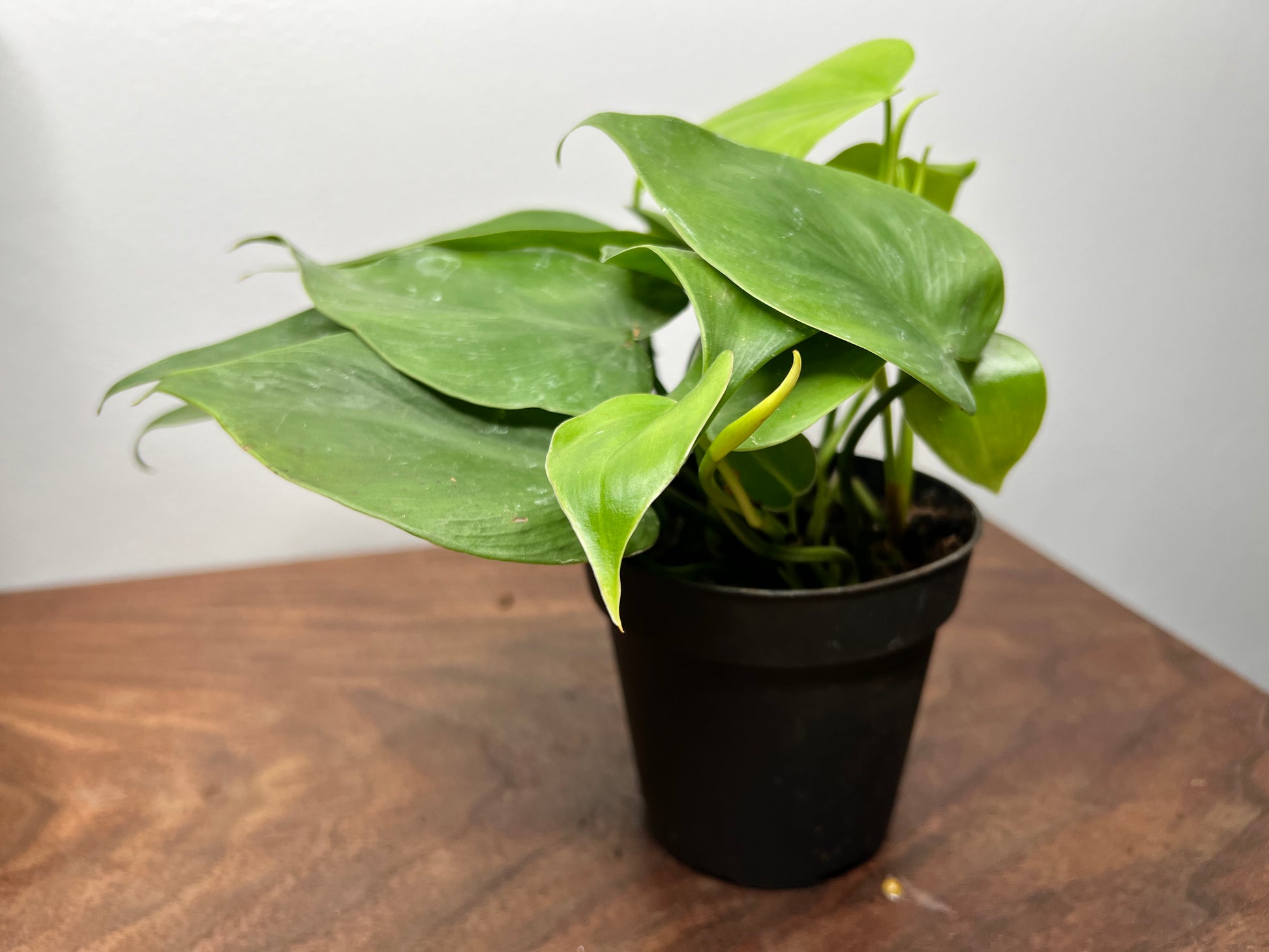The Rooted Plant Shop
philodendron heart leaf
philodendron heart leaf
Couldn't load pickup availability
The Heart leaf Philodendron (Philodendron hederaceum 'Neon') is a vibrant, eye-catching variety of the popular heartleaf philodendron. Known for its striking green-colored leaves, it’s a low-maintenance, trailing vining plant that can thrive in a variety of indoor environments.
Care Guide for Heartleaf Philodendron:
Light:
- Bright, indirect light: This plant thrives in bright, indirect light, where the neon coloration will be most vibrant. Too much direct sunlight can scorch the leaves, so it's best to keep it out of the harsh midday sun.
- Low light tolerance: While it can tolerate lower light levels, the leaves will likely lose some of their bright yellow hue and may turn more green. It will also grow more slowly in lower light conditions.
Watering:
- Moderate watering: Water when the top 1-2 inches of soil feel dry to the touch. This plant prefers its soil to dry out a bit between waterings but shouldn’t be left to dry out completely. Overwatering can lead to root rot, so be sure the pot has good drainage.
- Less frequent watering in winter: During the winter months, as the plant's growth slows, reduce watering frequency. Be cautious not to let the soil stay too wet for too long.
Temperature and Humidity:
- Warm temperatures: This plant thrives in temperatures between 65–80°F (18–27°C). It’s not frost-tolerant, so avoid exposure to temperatures below 50°F (10°C).
- Moderate to high humidity: While it will do well in average household humidity, it thrives in higher humidity levels (50% or more). If your home is dry, especially in winter, increase humidity with a humidity tray, regular misting, or a room humidifier.
Soil:
- Well-draining potting mix: Use a peat-based potting mix that is light and airy, or a mix designed for aroids. Ensure the soil drains well to prevent waterlogging and root rot.
Fertilizing:
- Feed during the growing season: Fertilize with a balanced, water-soluble fertilizer diluted to half strength once a month during the growing season (spring through summer). This helps support its active growth.
- Reduce feeding in winter: As the plant’s growth slows during the fall and winter, cut back on fertilizing to prevent nutrient buildup in the soil.
Potting & Repotting:
- Repot every 1-2 years: Repot the Neon Heartleaf Philodendron when it outgrows its pot, or when the soil becomes compacted and depleted of nutrients. Choose a pot that is only 1-2 inches larger than the current one to avoid root rot issues.
- Proper drainage: Always use a pot with drainage holes to prevent water from collecting at the bottom of the pot.
General Care Tips:
- Vining growth: As a vining plant, the Neon Heartleaf Philodendron will grow long, trailing stems. You can train it to climb a moss pole or trellis for a more vertical look, or allow it to cascade over the side of a pot or hanging basket.
- Pruning: Prune leggy stems or cut back any unwanted growth to keep the plant compact and bushy. Cut above a node to encourage new growth.
- Cleaning the leaves: Wipe the leaves occasionally with a damp cloth to remove dust and help maintain their bright, glossy appearance.
- Toxicity: Like many philodendrons, this plant is toxic to pets (cats and dogs) if ingested, so keep it out of their reach.
Common Issues:
- Yellowing leaves: This could be a sign of overwatering, poor drainage, or too much direct sunlight. Check watering habits and move the plant to a location with indirect light.
- Brown tips: Brown, crispy leaf tips can indicate underwatering, low humidity, or fluctuating watering schedules. Increase humidity and ensure the plant is consistently watered.
- Leggy growth: If the plant is not getting enough light, it will become leggy with sparse growth. Move it to a brighter location to encourage healthier, fuller growth.
- Pests: The Neon Heartleaf Philodendron is generally pest-resistant but may occasionally attract mealybugs, spider mites, or aphids. Regularly inspect for pests and treat with insecticidal soap if necessary.
Share
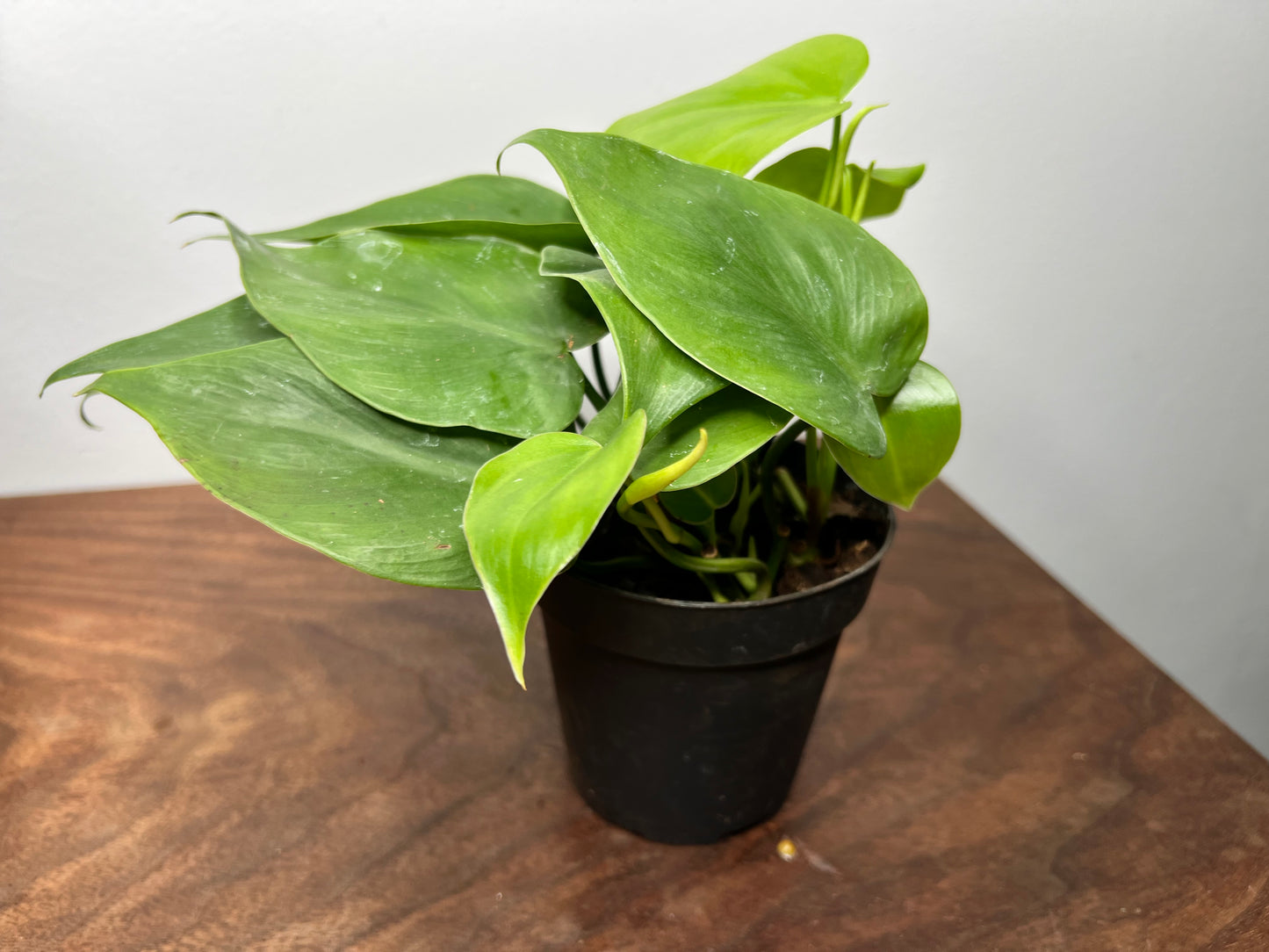
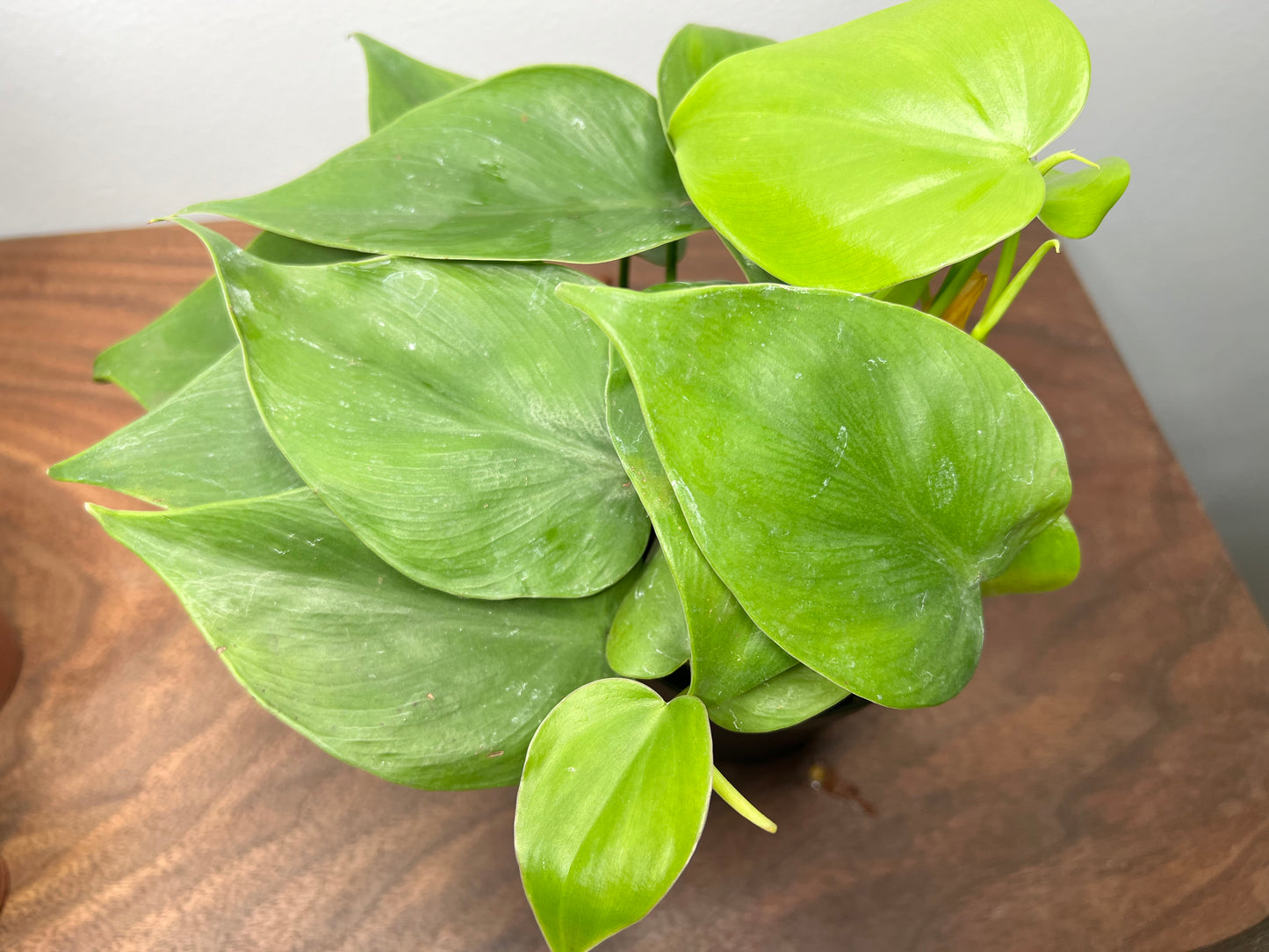
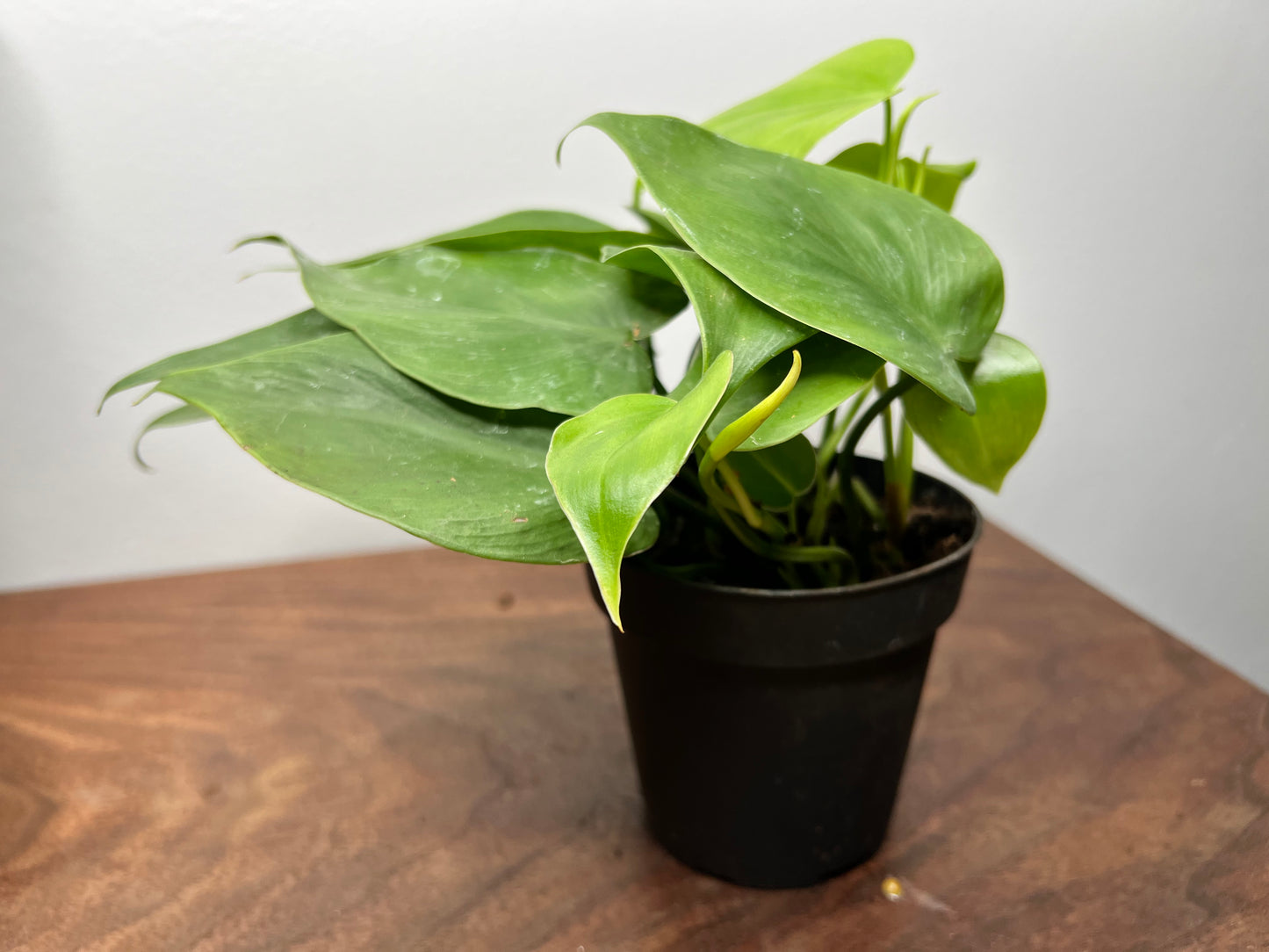
Let customers speak for us
from 424 reviewsThe packaging was great. Everything safe and secure. Beautiful fully intact plant with a cozy heat pack.

This is my 2nd time purchasing an Alocasia Polly 4 1st time in the winter 😍 40 hour heat pack was surprisingly hot on arrival Superbly Packaged! Super healthy and pretty I’m so happy thank you

Loving it so far! It’s beautiful!

Do not hesitate! Add to cart and checkout, you won’t be disappointed. Mel is incredibly knowledgeable and has taught me so much, she doesn’t just sell plants she teaches and shows you how to keep them alive and thriving! I always receive my plants quickly, and most important - safely. Mel packages them with so much care, and ensures they will make the voyage okay! We are in the thick of winter in Wisconsin, and both times our heat pack was still warm and plants were good. And I haven’t even mentioned the quality, huge selection and amazing prices! One other thing worth noting is none of her plants will come with problematic pests like many bug box, ope I mean big box stores! Here are a few photos, I wish I could share more than 5.
This plant arrived healthy and beautiful in spite of below freezing tempertures outside. 😁

All of my plants arrived perfect and are so beautiful! Will be coming back.

Packaging was great!!! Plants arrived is great condition and heat pack was still a little warm.

She was delivered looking like perfection! She was packed beautifully. Mel is my new go-to for all my plants!

Plant arrived quickly and heathy Inspite of cold temps. Plant was wrapped and shipped with the utmost protection and care!!! The firefly is doing well in her new home!!!! Will purchase again from The Rooted Plant shop without hesitation!!


